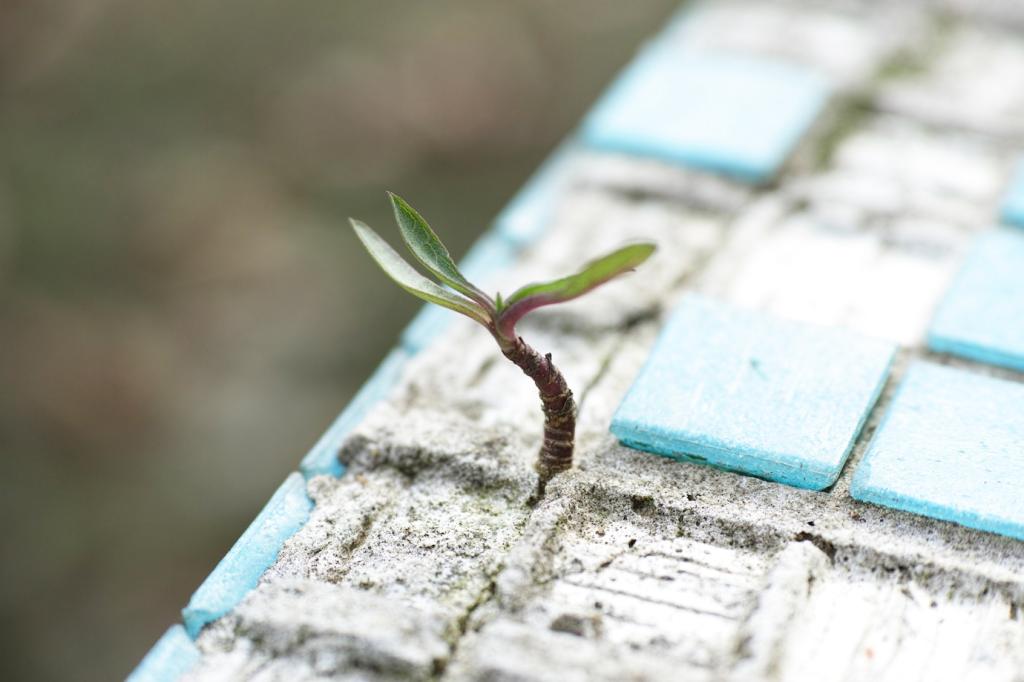
DIY Recycled Art for Interiors: Turn Everyday Discards into Soulful Home Statements
Chosen theme: DIY Recycled Art for Interiors. Welcome to a space where cast-offs become conversation pieces, and your walls whisper stories of reinvention. If you love creativity, sustainability, and personality-packed rooms, you’re in the right place. Subscribe, comment, and share your own transformations—we’ll cheer you on every step of the way.
Finding Materials with a Story
01
Look for bottle caps, worn books, chipped tiles, wooden crates, and fabric scraps with patina and character. Ask neighbors, explore thrift shops, and check community freecycle groups. Your next signature piece might be hiding under a dusty tarp, waiting to become a bright focal point.
02
Clean with mild soap, remove rust with a wire brush, and sand rough edges for safety. Seal porous surfaces with non-toxic finishes designed for interiors. If uncertain, do a patch test first. Your home deserves art that is not only striking but also safe and long-lasting.
03
Gather materials by color families—cool blues from glass bottles, earthy browns from corks, and lively reds from magazine clippings. Texture matters too: corrugated cardboard, denim frays, and weathered wood. Curate a palette that echoes your room’s mood, then let the textures lead your design.

Core Techniques for Upcycled Masterpieces
Layer paper, fabric, cardboard, and small found objects using matte gel medium or PVA glue. Start with a bold composition line, then build clusters with rhythm and repetition. Aim for harmony and surprise—let one unexpected object steal the show and anchor your narrative.


Designing for Your Space
Select a single wall for your boldest work, then leave breathing room around it. Visual hierarchy matters: large central piece, supportive accents, and a few negative spaces. The result feels curated, not crowded, even when materials are eclectic and improvisational.
Designing for Your Space
Pair raw, reclaimed textures with clean lines and light backgrounds. A minimal shelf can frame a busy assemblage; a neutral rug calms a colorful collage. Echo one repeated shape or color across the room to unify everything without sacrificing personality or warmth.
Project Narratives to Inspire
Friends dropped off caps from backyard barbecues all summer. Sorted by hue, they became a river of blues and greens flowing across a plywood panel. Each cap recalled a laugh or song, turning casual gatherings into a permanent, shimmering memory wall.
Project Narratives to Inspire
A paint-splattered wooden ladder, retired from decades of repairs, found new life as a tiered plant display. Sanded, sealed, and strung with recycled glass jars as planters, it now frames the window. Every sunrise paints it gold, and the house feels like a greenhouse.
Project Narratives to Inspire
Glossy pages, rolled tight and cut into sticks, arranged into concentric rings on canvas. From far away: a minimalist target. Up close: headlines, memories, and fragments of time. Guests lean in, reading the past layered into a quietly mesmerizing present.
Sustainability Impact and Mindset
From Waste to Worth
Transforming discarded materials conserves resources and reduces landfill pressure. When you reclaim wood or repurpose glass, you extend a material’s life and cut demand for new production. Your artwork becomes a visible commitment to mindful living and thoughtful consumption.
Small Carbon Wins Add Up
Local sourcing, hand tools, and non-toxic finishes keep footprints modest. Choosing secondhand frames and remnant paint avoids new manufacturing. Over time, these modest decisions accumulate into meaningful environmental benefits, especially when shared across a community of eager makers.
Circular Creativity in Community
Swap bins, curbside freebies, and school donation drives create a steady material flow. When neighbors share, scarcity fades and ideas multiply. Host a themed swap night, document projects, and tag us; together we can spark a neighborhood culture of creative reuse.
Choose soft materials, blunt tools, and water-based adhesives. Pre-cut sharp edges, and tape over metal corners. Assign playful roles—color captain, texture scout, layout designer—so kids feel ownership. Celebrate progress, not perfection, and display their pieces proudly at kid-height.
Family-Friendly, Safe, and Inclusive Making
Work on foldable tables, use stackable bins, and mount pegboards for tools. Vertical drying racks save floor space. Curate a rolling cart of essentials to wheel between rooms. With smart organization, creativity thrives even in cozy apartments or shared living spaces.
Family-Friendly, Safe, and Inclusive Making
Care, Maintenance, and Longevity
Dust gently with soft brushes or microfiber cloths. Avoid harsh chemicals; spot-clean with diluted soap. Reseal wood or paper-based works annually with appropriate, low-VOC finishes. Prevent moisture damage by keeping pieces away from steamy kitchens and unventilated bathrooms.

Care, Maintenance, and Longevity
Use anchors matched to wall type, and distribute weight with cleats or multiple hooks. Cushion contact points with felt. For renters, consider removable strips for lighter works. Secure all wire twists carefully to prevent gradual sagging and preserve your composition’s balance.
